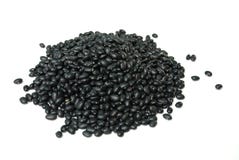Tamarinds. Tamarind Is A Tropical Tree, Native To Tropical Africa, Including Sudan And Parts Of The Madagascar Dry Deciduous Forests. It Was Introduced Into India So Long Ago That It Has Often Been Reported As Indigenous There, And It Was Apparently From India That It Reached The Persians And The Arabs Who Called It Tamar Hindi (Indian Date, From The Date-Like Appearance Of The Dried Pulp), Giving Rise To Both Its Common And Generic Names. The Fruit Pulp Is Edible And Popular. It Is Used As A Spice In Both Asian And Latin American Cuisines, And Is Also An Important Ingredient In Worcestershire Sauce, Hp Sauce And The Jamaican-Produced Pickapeppa Sauce. The Hard Green Pulp Of A Young Fruit Is Very Tart And Acidic And Is Most Often Used As A Component Of Savory Dishes. The Ripened Fruit Is Sweeter, Yet Still Distinctively Sour, And Can Be Used In Desserts And Sweetened Drinks, Or As A Snack. In Thailand, There Is A Carefully Cultivated Sweet Variety With Little To No Tartness Grown Specifically To Be Eaten As A Fresh Fruit. The Leaves Are Also Distinctly Tart In Flavor, And Are Used In Many Soups In The North Eastern Part Of Thailand. In Temples, Especially In Asian Countries, The Pulp Is Used To Clean Brass Shrine Furniture, Removing Dulling And The Greenish Patina That Forms.
ID 5515376 © Puppie2008 | Megapixl.com
CATEGORIES
EXCLUSIVE
Your image is downloading.
Sharing is not just caring, it's also about giving credit - add this image to your page and give credit to the talented photographer who captured it.:




































